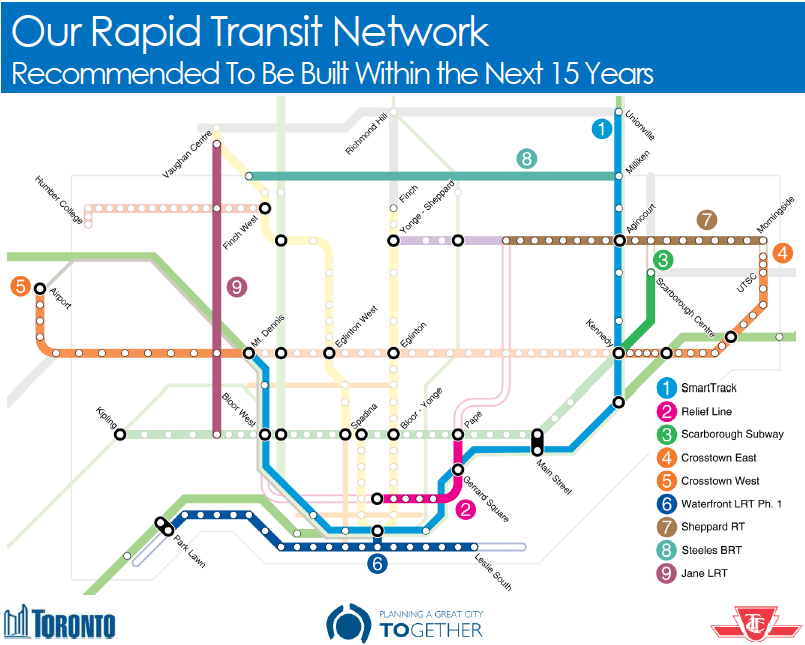crs1026
Superstar
Thank you for the thorough response! Much appreciated.
Something I was thinking of w/the issue of infrastructure costs triggered by longer trains, was sidings.
Clearly many haven't been expanded due to longer trains, I'm guessing its not that much of an operational impediment?
I was thinking at some point the thought that sidings that were only good for 6,000ft trains might have to be doubled in length, and in some cases that might require new grade-separated crossings, might have posed a real cost-barrier to longer trains, but I'm gathering that's not the case.
It's a huge impediment, but railways are incredibly frugal. The railways have a very hardnosed approach to gaining efficiencies.
Ten years ago CN's Bala Sub from Doncaster to South Parry - 130 miles - had 11 sidings all roughly 6300-6700 feet long. There was a small amount of double track south of Elgin (Richmond Hill) which GO paid for. Today, there are only two long sidings, one at Brechin East and one at Medora, each roughly 13,ooo feet. The others are mostly still there but the longer trains can't use them.
Across Northern Ontario, there are only nine long sidings between Transcona East and Sudbury, with a little bit of double track around Hornepayne and on the east approach to Winnipeg. There were roughly 100 "short" sidings of 6000-7000 feet, which again still exist and see some use but don't help with the long trains.
That's a huge reduction in how many trains can use the line at one time, and it's a huge reduction in the ability to add even one additional train to the route. (As recent experience with VIA shows). But running only half as many trains to move the same volume (hence reducing labour and other costs) for an expense of only that little amount of siding extension has proved extremely good for the bottom line.
How do they manage operationally? They time the meets very carefully. Rather than have one train sitting in the siding blocking crossings while waiting for the other train to arrive, they coordinate so that trains "hang back" where there is room on the mainline until the opposing train gets close to the meeting point. Or, they have one long train leave half its train in one siding and half in the next. When the opposing train has passed, the first train has to backtrack to pick up its tail end. That's hugely inefficient, but it beats investing capital. (Between 2009 and 2016, CN did add around 52 miles of double track to its Winnipeg-Edmonton line, because the growth in traffic is so heavy and can be depended on for the required payback period.)
That meet-when-it's-convenient approach works with freight, but it won't work with a GO train.
It's no surprise that the one GO expansion project that has been rocketing along is the additional double tracking from Elgin up to Quaker (where the new layover yard was built) and now further north to Setter (near Bloomington). GO will only run a few trains a day on that line - the rest of the day, the added track is available to CN for its freights. The benefit to CN is huge, and GO is paying for it. So CN is making it happen. I would bet CP would be happy to do the same to Cambridge, especially for just a couple of peak GO trains. The problem is when you put the cost of those projects next to the cost of things like LSE and Kitchener expansion, and consider cost per rider gained.
- Paul
Last edited:





